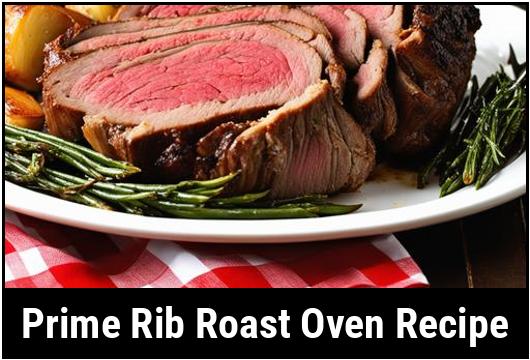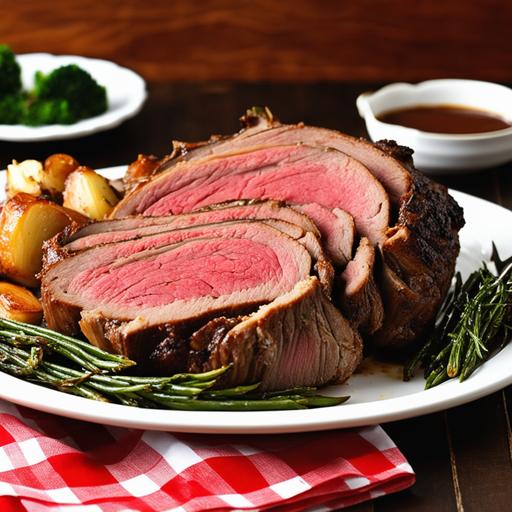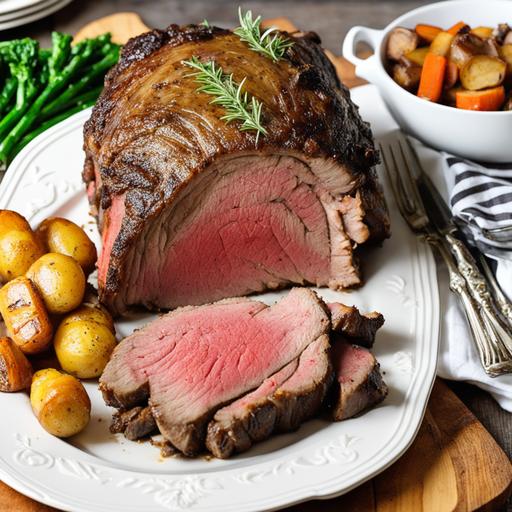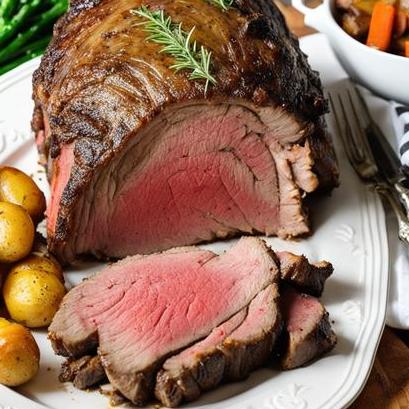
Everything You Need To Know About A Perfect Prime Rib Roast Oven Recipe
Nothing could be more delicious and satisfying than a succulent, juicy and perfectly cooked prime rib roast. A festive meal that stands out with its delicious and full flavors, a prime rib roast is a signature dish for any special occasion. It is not just any meat, it is pure indulgence, a masterpiece of culinary perfection.
If you want to serve the best prime rib roast ever and make it the highlight of your dinner party, our informative and comprehensive article is just what you need. From understanding the basics of food science to choosing the perfect cut of meat, careful cleaning and preparation tips, to the ultimate recipe for prime rib roast oven, we covered it all.
Understand the Basics of Food Science
Before starting a step by step guide, let us get all nerdy and understand the basic science behind prime rib roast cooking.
-
Structure: A prime rib roast is a large, tender cut of meat from the upper, center section of the ribcage. It has large intermuscular fat deposits that give it plenty of flavor, making it much more forgiving — forgiving of overcooking, undercooking or uneven temperatures.
-
Fat content: Higher fat content generally means juicier meat so, don’t skimp on the fat. Look for meat that has a good amount of fat marbling throughout its flesh.
-
Temperature: Roasting or baking the prime rib roast at a high temperature ensures that the outside of the roast form a crispy crust while the inside remains juicy and tender.
Choosing and Preparing The Meat
Choosing the right meat is crucial to a successful prime rib roast. Selecting the best prime rib roast in the market can be daunting, but here are some tips to help you out:
-
Choose the right cut: The bone-in prime rib roast is always the best choice as the bone acts as a conductor of heat and helps to keep the meat juicy.
-
Size matters: Plan to purchase about 1 pound per person, and it should be bone-in and completely covered with a layer of fat on top.
-
Quality: Look for marbling, creamy white fat, and brighter red color in your prime rib roast. Also, try to buy meat from a trusted butcher shop or high-quality meat supplier.
-
Age: The flavor and tenderness increase with the age, aging meat 4-6 weeks before cooking is an excellent way to tenderize the meat.
Cleaning and Preparation Tips

Thorough cleaning and proper preparation are vital to ensure a flavorful and perfectly cooked prime rib roast. Here are some practical tips to follow while preparing your prime rib roast for cooking.
-
Remove the packaging from the meat and rinse it in cold water.
-
Pat it dry with paper towels and leave it at room temperature for one to two hours before cooking.
-
Season the meat with kosher or coarse sea salt and ground black pepper before cooking.
-
Use a meat thermometer to ensure you cook it to the desired temperature.
A Perfect Recipe for a Prime Rib Roast Oven

Follow these step-by-step directions to prepare a perfect prime rib roast oven recipe for your dinner guests:
-
Preheat the oven to 450F.
-
Rub the prime rib roast with olive oil or melted butter.
-
Season the meat with a mixture of kosher salt and black pepper. You can also add minced garlic, fresh rosemary, or thyme for additional flavors.
-
Place the meat on a roasting rack in a oven-safe pan, with the fatty side up.
-
Roast the meat for 15 minutes at 450F, then reduce the oven temperature to 350F and continue cooking for 12-15 minutes per pound.
-
Use a thermometer to check the internal temperature of the roast before removing it from the oven. For rare, it should read 120F, 130F for medium-rare, 140F for medium and 150F for well done roast.
-
Let the meat rest for 20 minutes before carving and serving.
Tips to Ensure Perfect Doneness

Here are some additional tips to ensure your prime rib roast is cooked to perfection and is tender and juicy with a crispy crust:
-
Cooking time: Calculate the cooking time with the number of pounds you have. Do not overcook-it as it can ruin the meat’s tenderness and juiciness.
-
Use a meat thermometer: Invest in a good quality meat thermometer that can withstand high temperatures. Insert it into the thickest muscle, where you intend to take the reading to ensure accuracy.
-
Resting: Allow the meat to rest for at least 20 minutes before carving. Resting helps the juices to redistribute and settle back into the meat, making it more tender and succulent.
Variations of Prime Rib Roast Oven Recipes

With a slight twist, you can add more flavors to the prime rib roast recipe that your guests will enjoy. Here are some of our top favorite variations:
-
Garlic Herb Prime Rib: With this recipe, you can infuse garlic, thyme, rosemary, and other herbs to boost the flavor profile of your prime rib roast.
-
Horseradish Crusted Prime Rib: You can crust your prime rib roast with horseradish, garlic, and Dijon mustard to add a tangy and spicy flavor.
-
Coffee Crusted Prime Rib: Try a unique twist with a coffee rub that gives your prime rib roast an earthy flavor and that all-important crust.
What to Do if You Overcook or Undercook the Prime Rib Roast
Overcooked or undercooked meat can ruin your dinner party. But don’t panic! Here are some quick fixes to remedy these mistakes:
-
Overcooked Prime Rib: Serve it with a rich sauce or gravy, or shave it thinly and place it on top of pizza or a sandwich.
-
Undercooked Prime Rib: Cut the undercooked parts into thin slices and sauté them over high heat with some olive oil and butter for extra flavor.
Final Thoughts
Cooking the perfect prime rib roast oven recipe can seem like an intimidating and daunting task, but It’s quite simple really. With a few tips and tricks, you can cook a delicious and tender prime rib roast in your oven for a perfect dinner party or Christmas feast. By following our detailed and informative guide, you are sure to bring out the best flavor in this delicious meat. Happy Roasting!
FAQS On Prime Rib Roast Oven Recipe
What Is A Prime Rib Roast?
A prime rib roast is a large and flavorful cut of beef that comes from the primal rib section of the cow. It is known for its tenderness, marbling, and rich beefy flavor.
How Long Does It Take To Cook A Prime Rib Roast In The Oven?
The cooking time for a prime rib roast in the oven can vary depending on the size of the roast and desired level of doneness. As a general guideline, you can expect to cook a prime rib roast at 325°F (163°C) for approximately 15-20 minutes per pound for medium-rare. It is always recommended to use a meat thermometer to ensure accurate cooking times.
What Is The Best Way To Season A Prime Rib Roast?
Seasoning a prime rib roast can greatly enhance its flavor. A popular and delicious way to season it is by creating a flavorful herb rub. Combine herbs such as rosemary, thyme, garlic powder, salt, and black pepper. Generously season the entire roast with the herb rub, making sure to thoroughly coat all sides. This will create a delicious crust and infuse the meat with aromatic flavors.
Should I Let The Prime Rib Roast Rest After Cooking?
Absolutely! Allowing the cooked prime rib roast to rest is crucial for a juicy and tender result. After removing it from the oven, loosely tent the roast with aluminum foil and let it rest for around 15-20 minutes. This resting period allows the juices to redistribute evenly throughout the meat, resulting in a moist and flavorful roast.
Can I Sear The Prime Rib Roast Before Placing It In The Oven?
Searing the prime rib roast before baking it in the oven is a personal preference and not necessary. While searing can add an extra layer of flavor and texture, it can also cause the outer part of the meat to cook faster than the inside. However, if you choose to sear the roast, ensure it is done quickly over high heat and then reduce the oven temperature accordingly to avoid overcooking the roast.



